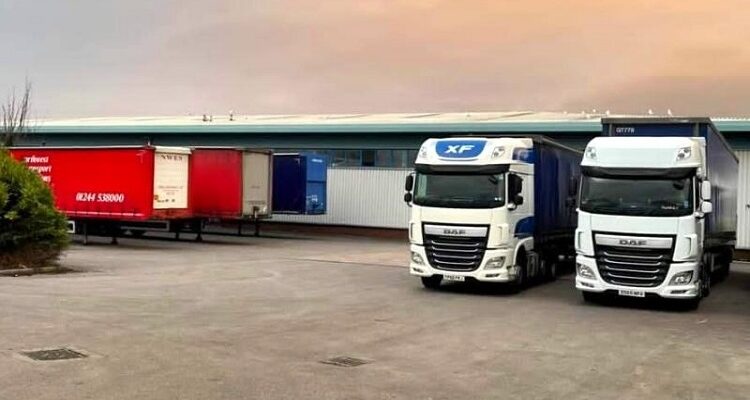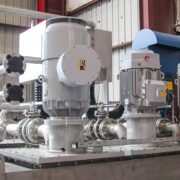In today’s fast-paced business world, managing logistics efficiently is crucial for success. Optimizing business logistics with advanced transport solutions can significantly reduce costs and improve delivery times. Companies are increasingly looking for innovative ways to streamline their supply chain operations and stay ahead of the competition.
Advanced transport solutions offer a range of benefits that traditional methods can’t match. From route optimization software to real-time tracking systems, these technologies enhance visibility and control over logistics processes. Businesses can not only predict delays but also quickly act to mitigate them, ensuring timely deliveries.
Incorporating these modern logistics tools can transform how companies handle their transportation needs. Better planning and coordination lead to fewer disruptions, lower fuel costs, and higher customer satisfaction. Embracing these solutions can be a game-changer for any company looking to improve its supply chain efficiency.
Table of Contents
Strategic Planning for Transportation
Effective transportation planning is crucial for optimizing logistics. Key aspects include assessing current logistics capabilities, forecasting demand, and incorporating sustainability goals.
Assessing Current Logistics Capabilities
To begin, businesses must evaluate their existing logistics infrastructure. This involves examining warehousing facilities, transportation networks, and technology systems. By identifying weak spots, they can target improvements.
Key considerations:
- Warehousing Capacity: Ensure there is enough space to handle current and future inventory demands.
- Transportation Networks: Evaluate routes, modes, and transit times to identify delays or inefficiencies.
- Technology Systems: Assess software and hardware used for tracking and managing logistics to ensure they are up-to-date.
Regular audits and stakeholder feedback can provide insights into operational efficiency. Implementing changes based on this data is essential for robust logistics.
Forecasting Demand and Transport Needs
Accurate forecasting helps in aligning transport resources with future demand. This involves analyzing historical data, market trends, and seasonal variations.
Strategies for effective forecasting:
- Data Analysis: Use historical sales data to predict future trends.
- Market Trends: Monitor industry trends and economic indicators that may impact demand.
- Seasonal Adjustments: Account for peak seasons and adjust logistic plans accordingly.
By keeping forecasts updated, businesses can prevent bottlenecks and ensure timely deliveries. This proactive approach supports better inventory management and customer satisfaction.
Incorporating Sustainability Goals
Integrating sustainability into transport planning is becoming increasingly important. This includes reducing carbon emissions, optimizing fuel consumption, and adopting eco-friendly practices.
Tips for sustainable transport:
- Eco-friendly Vehicles: Invest in electric or hybrid vehicles to reduce carbon footprints.
- Route Optimization: Use software to plan the most efficient routes, saving fuel and time.
- Consolidation Strategies: Combine shipments to maximize load capacity and minimize travel.
Businesses can also explore partnerships with green logistics providers. Adopting sustainable practices not only helps the environment but can also enhance brand reputation and lead to cost savings in the long run.
Implementing Advanced Transport Technologies
Adopting cutting-edge transport technologies can revolutionize business logistics. Key advancements include autonomous vehicles, IoT for fleet management, and real-time data analytics.
Leveraging Autonomous Vehicles
Autonomous vehicles (AVs) offer substantial benefits to logistics. They operate continuously without breaks, increasing efficiency and reducing delivery times.
AVs reduce human error, enhancing safety and reliability. They can be programmed for optimal routes, saving on fuel and maintenance costs. By using electric AVs, businesses can also cut carbon emissions, supporting sustainability goals.
Challenges include regulatory hurdles and high initial investment costs. Companies must navigate these to fully benefit from AVs in their logistics operations.
Utilizing IoT for Fleet Management
The Internet of Things (IoT) provides real-time monitoring and management of fleet vehicles. Sensors track vehicle location, performance, and environmental conditions. This data helps in proactive maintenance, reducing downtime and repair costs.
IoT improves route planning by providing traffic and weather updates. It can alert managers about delays or issues, allowing quick responses.
Security concerns over data integrity and the need for scalable solutions are considerations. Companies must ensure robust cybersecurity measures to protect fleet data.
Integrating Real-Time Data Analytics
Real-time data analytics is vital for optimizing logistics operations. Analytics software processes data from various sources, offering insights into trends and performance metrics.
These insights aid in route optimization, inventory management, and demand forecasting. By identifying inefficiencies, businesses can implement targeted improvements.
Investment in technology and skilled personnel is required for effective implementation. Ensuring data accuracy and seamless integration with existing systems is crucial.


















Comments